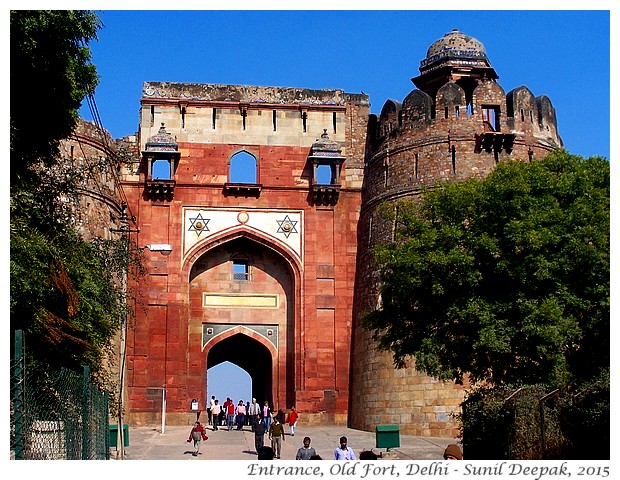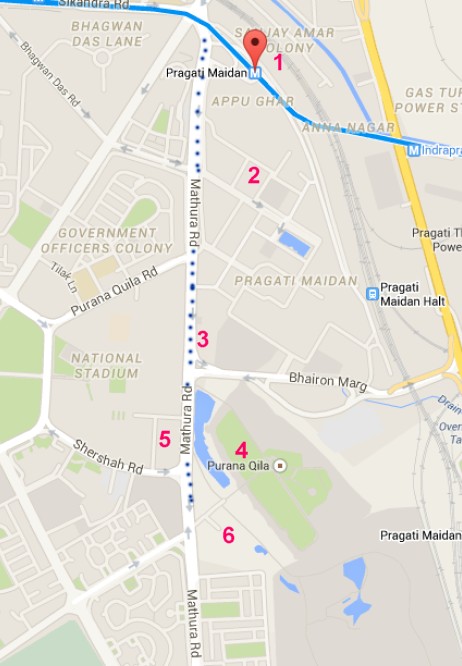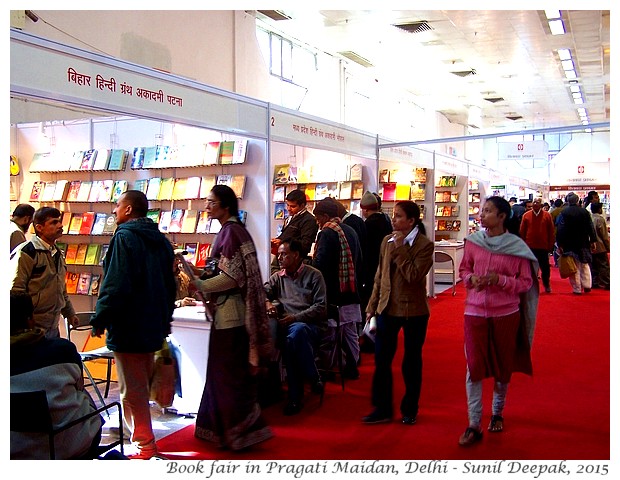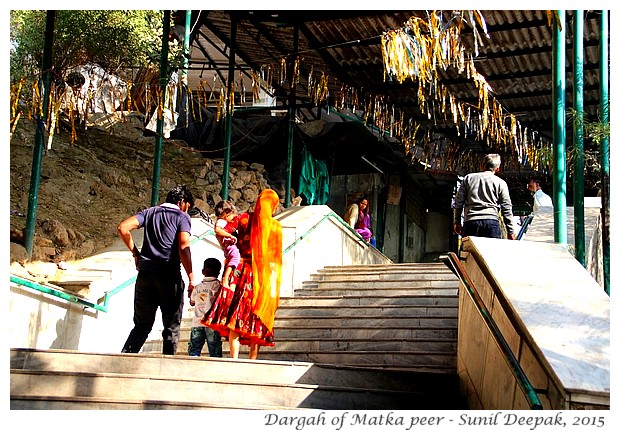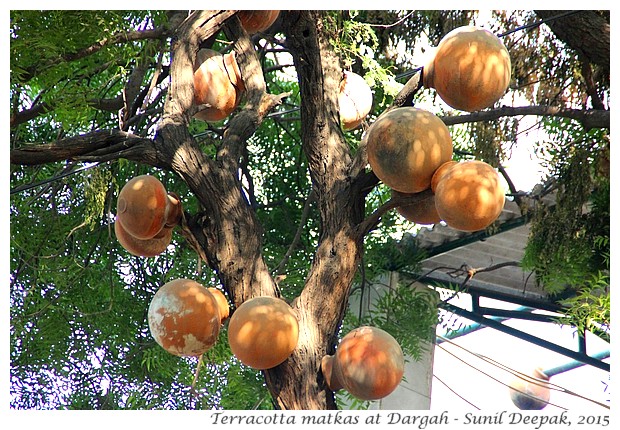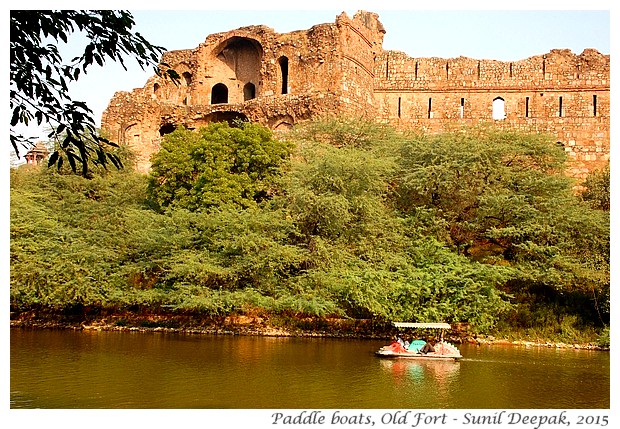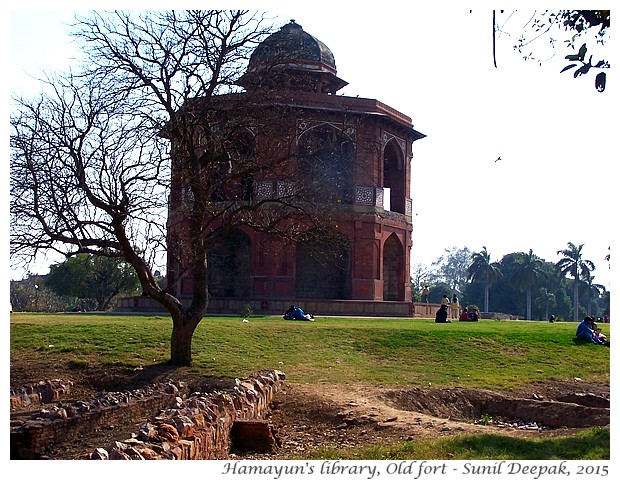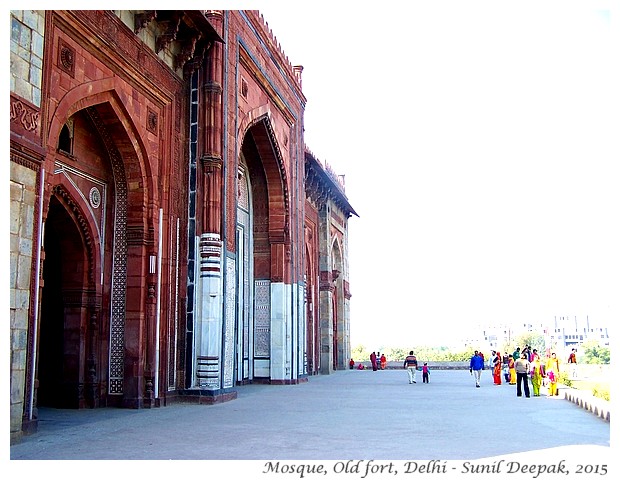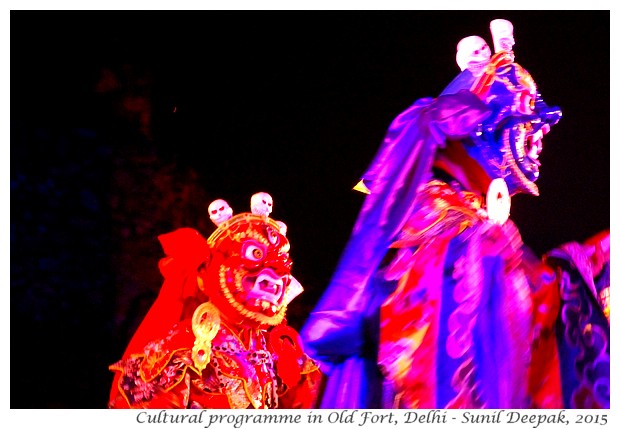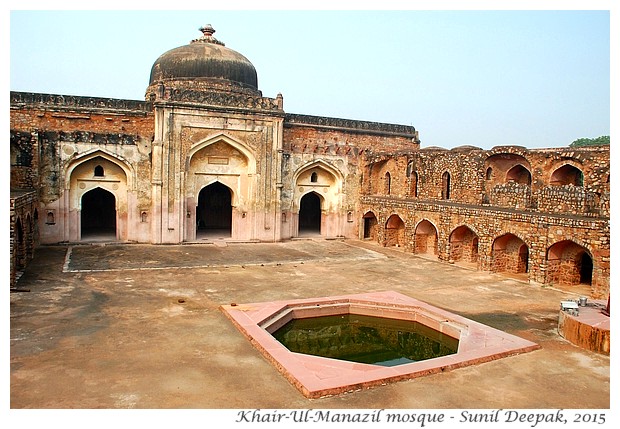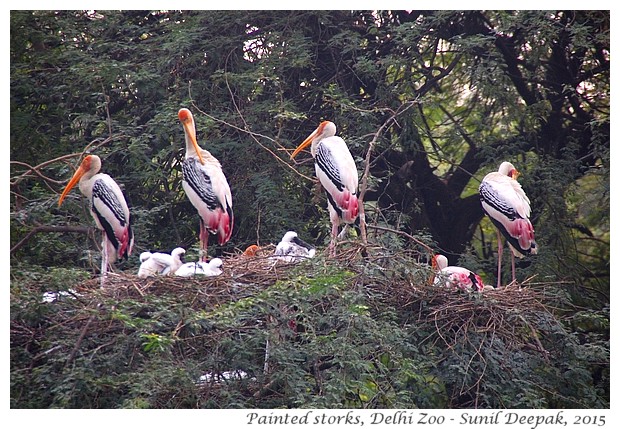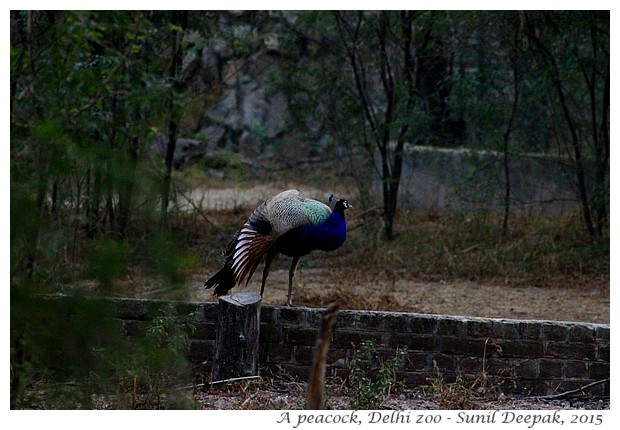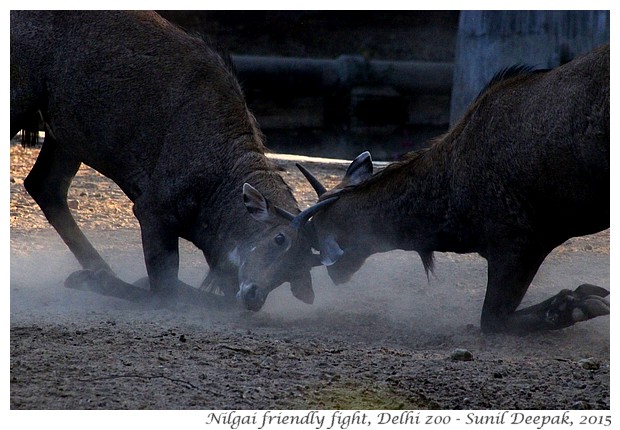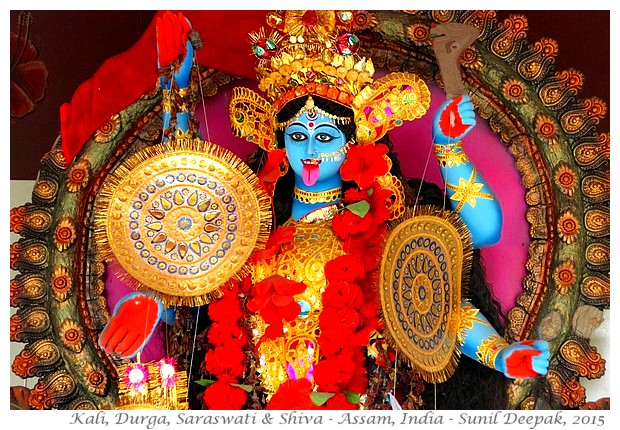
THE TRADITIONS OF GODDESS KALI
Kali belongs to the Hindu traditions of the north-eastern parts of India, especially Bengal and Assam. As a child, I had been to the Kali temples in Delhi but I had never taken a good look at the statues of this goddess, probably because I found her a little frightening and intimidating - her red tongue coated with blood, the garland of skulls around her neck and the bleeding cut head she holds in her hand, seemed to me the stuff of nightmares!
I had often wondered how Bengal and Assam can have traditions of two such contrasting goddesses - Saraswati, the peaceful goddess of learning, and Kali, the goddess of vengeance and death. I had always preferred Saraswati.
I found an article of Devdutt Pattanaik explaining the Kali tradition in Hinduism, according to which Kali was initially seen as a demonic force but who was later included in the Hindu mainstream as a "slayer of demons":
I had often wondered how Bengal and Assam can have traditions of two such contrasting goddesses - Saraswati, the peaceful goddess of learning, and Kali, the goddess of vengeance and death. I had always preferred Saraswati.
I found an article of Devdutt Pattanaik explaining the Kali tradition in Hinduism, according to which Kali was initially seen as a demonic force but who was later included in the Hindu mainstream as a "slayer of demons":
“Kali-like goddesses were worshipped by agricultural communities, who were probably matriarchal, who came to be feared by patriarchal nomadic communities… Between the 2nd century BC and 3rd century AD, Kali appears unequivocally for the first time as a goddess in the Kathaka Grihyasutra, a ritualistic text that names her in a list of Vedic deities to be invoked with offerings of perfume during the marriage ceremony. Unfortunately, the text reveals nothing more about her.
In the Mahabharata and Ramayana which were being composed around this time, goddesses, including Kali, are given more character: they are usually independent and (hence?) wild, appearing as manifestations of divine rage and embodiments of the forces of destructions. In the Mahabharata, for example, the nocturnal bloodbath by Ashwattama at the end of the 18-day war, when the innocent children of the Pandavas are slaughtered rather dastardly while they are asleep, is seen as the work of “Kali of bloody mouth and eyes, smeared with blood and adorned with garlands, her garment reddened, — holding noose in hand — binding men and horses and elephants with her terrible snares of death.”
In the Devi Mahatmya, dated roughly to 8th century AD, Kali became a defender against demonic and malevolent forces and by the 19th century, Kali was a goddess of mainstream pantheon, a symbol of divine rage, of raw power and the wild potency of nature. The one who was once feared as an outsider had made her way right to the heart of the mainstream.”
SHIVA AND KALI STATUES IN ASSAM
During my travels in Assam over the past few weeks, I saw many statues of Kali, where the goddess is shown standing with one foot on a lying down Shiva. When I saw those statues, I was confused. I had never noticed before that Kali stands with her foot on Shiva!
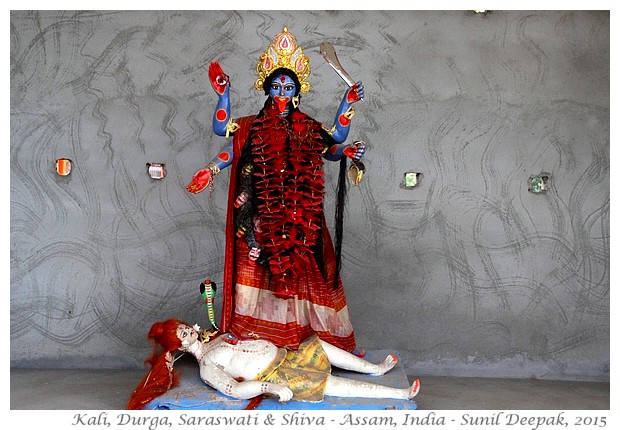
During my stay in Bologna (Italy), I had seen the Durga statues during the annual Durga Puja organised by the local Bengali community, where she is shown standing on the demon king Mahishasur. So when I saw the Kali-Shiva statues, I asked myself, if Shiva was seen like a demon, to be killed by Kali?

During my stay in Bologna (Italy), I had seen the Durga statues during the annual Durga Puja organised by the local Bengali community, where she is shown standing on the demon king Mahishasur. So when I saw the Kali-Shiva statues, I asked myself, if Shiva was seen like a demon, to be killed by Kali?
Searching for information about Kali and Shiva, I discovered another story on the internet. Another article of Devdutt Pattanaik, “Krishna as Kali”, explained that the foot of Kali on Shiva is part of a love game between the two, “When you dance atop me as Kali, naked with hair unbound, unafraid to be yourself, unafraid to be powerful and vulnerable and unafraid of being judged and mocked, I feel love.”
Thus, Shiva and Kali relationship was part of Shiva and Shakti relationships that explored different forms of love. As Kali, Shakti expresses herself without inhibitions or need of male approval, and Shiva loves this expression of the female power.
Thus, Shiva and Kali relationship was part of Shiva and Shakti relationships that explored different forms of love. As Kali, Shakti expresses herself without inhibitions or need of male approval, and Shiva loves this expression of the female power.
After reading this article, I looked at the Kali and Shiva statues once again and this time I could see that Kali is not trying to kill Shiva. Rather, Shiva is shown awake and a little thoughtful, with his eyes open, while Kali seems to be tickling his chest with her toes.
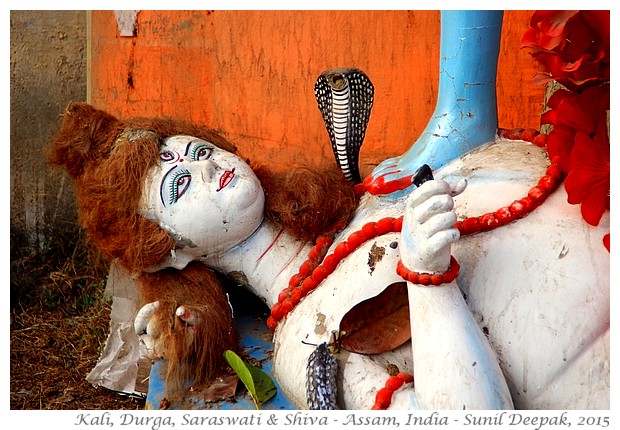
However, this article of Pattanaik also touched on another aspect – the story of how Shiva and Kali decided to come down to earth and be born as Radha and Krishen respectively. This meant that Shiva was born in female form as Radha and Kali was born in the male form as Krishna.
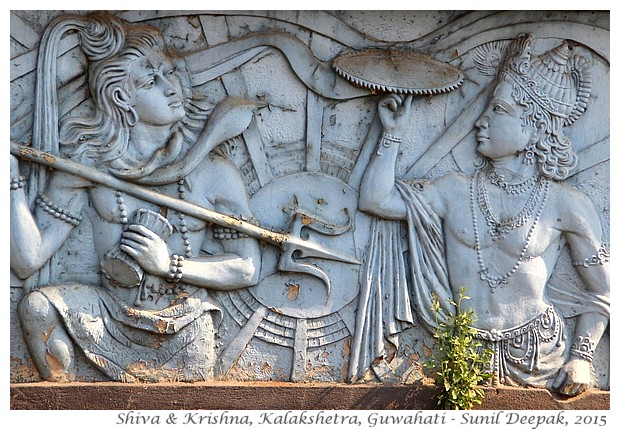
Pattanaik concludes this article with the following words:
“Just as Kali had made Shiva give up his autonomy and understand the value of the not-so-autonomous other, the pining beloved, Radha helped Krishna understand the limitations of society, the struggle between faith in divinity and fidelity for the husband. Radha was demanding, as Kali once had been. Radha sat on Krishna as Kali stood on Shiva. The two thus mingled and merged in roles and thoughts and feelings. But there was one crucial difference.
Kali had made the wandering hermit, Shiva, into a rooted hermit, Shankara. Radha did the opposite. She remained a flower stuck to the branch of a tree while Krishna became the bee that moves on after getting enriched with nectar. And so fulfilled by Radha’s love, Krishna left Madhuban for Mathura. Kali had revealed love through shringara, romance, as only Krishna can. Radha revealed love through vairagya, renunciation, as only Shiva can.”
CONCLUSIONS
I am glad that my curiosity about the Shiva and Kali statues led me to these articles of Pattanaik and learning about explorations of gender relationships and human sexuality in the Indian myths. Probably most persons when they learn about these myths, even without knowing about the psychological explanations given by Pattanaik, still internalize an intuitive understanding of the complex and infinite variety of human diversity.
I think that this Shiva-Radha and Kali-Krishna myth is a good example of the traditional Indian way of thinking. These myths are complex and they seem to be telling a truth about gods and human relationships in ways that require an intuitive understanding rather than a rational understanding.
I am glad that my curiosity about the Shiva and Kali statues led me to these articles of Pattanaik and learning about explorations of gender relationships and human sexuality in the Indian myths. Probably most persons when they learn about these myths, even without knowing about the psychological explanations given by Pattanaik, still internalize an intuitive understanding of the complex and infinite variety of human diversity.
I think that this Shiva-Radha and Kali-Krishna myth is a good example of the traditional Indian way of thinking. These myths are complex and they seem to be telling a truth about gods and human relationships in ways that require an intuitive understanding rather than a rational understanding.
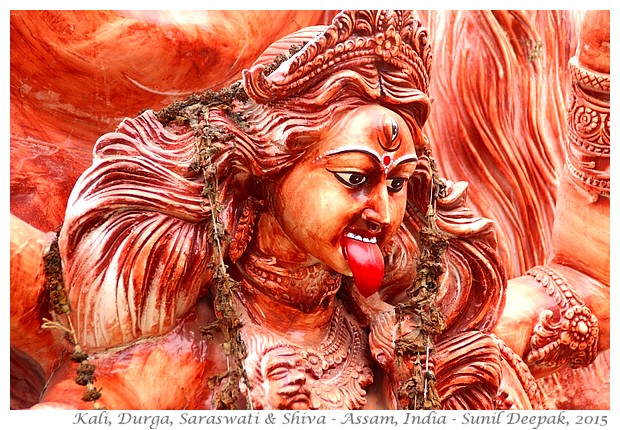
I like the way Pattanaik illustrates these myths in the Indian way of thinking and understanding the world and ourselves. This Indian way of understanding is the way of subjective truths, non linear thinking, where things can have many simultaneous meanings, often contradictory!
P.S. My friend Harjinder (Laltu) was surprised when he read that I had never seen the Shiva-Kali statues before. He had grown up in Kolkata.
He has shared another story about these statues that he had heard as a child - When whole earth was terrified of the anger of Kali who wanted to destroy everything, the gods asked Shiva for help. Shiva lied down in front of Kali and when she put her foot on him, she put out her tongue in a gesture of repentance, "Oh, look what have I done now!" These statues tell that story.
I love Harjinder's story - it makes her look less intimidating!
***

